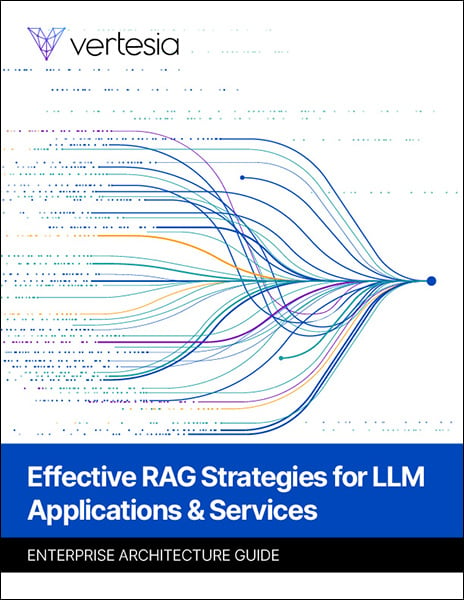ENTERPRISE ARCHITECTURE GUIDE
Effective RAG Strategies for LLM Applications & Services
This paper explores the intricacies of Retrieval-Augmented Generation (RAG) strategies, emphasizing the superiority of semantic RAG for enterprise software architects aiming to build robust LLM-enabled applications and services.

In the landscape of artificial intelligence and machine learning, the advent of Large Language Models (LLMs) has revolutionized the development of intelligent applications and services. These models exhibit remarkable capabilities in understanding and generating human-like text, offering immense potential for various enterprise applications.
However, a significant challenge persists: LLMs can generate outputs that are plausible yet factually incorrect, a phenomenon known as hallucination.
Retrieval-Augmented Generation (RAG) has emerged as an important strategy to address this issue by integrating external knowledge sources into the generation process, thereby enhancing the accuracy and reliability of LLMs.
WHY READ THIS GUIDE?
Enterprise Architects should read this guide to:
- Understand Retrieval-Augmented Generation (RAG)
- Discover the challenges of basic RAG strategies vs the advantages of semantic RAG
- Learn how RAG helps prevent LLM hallucinations
- Explore why semantic RAG is the best strategy for enterprise teams
- Get an architectural overview of a typical semantic RAG system
- Review an example use cases for semantic RAG